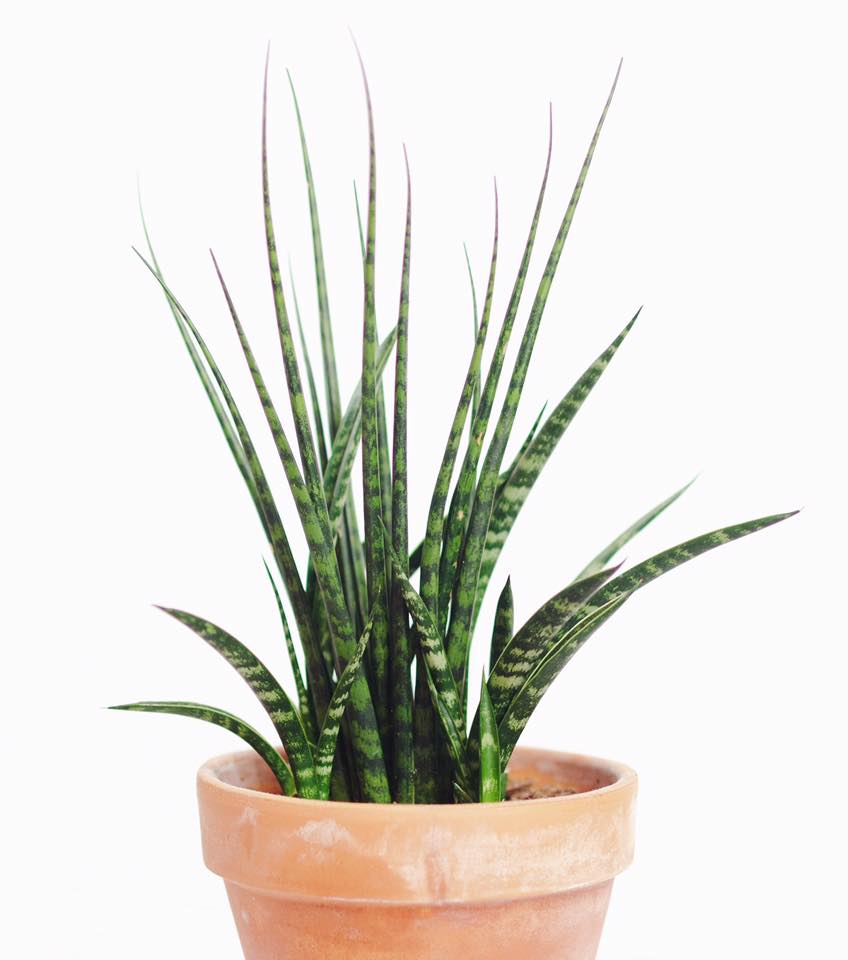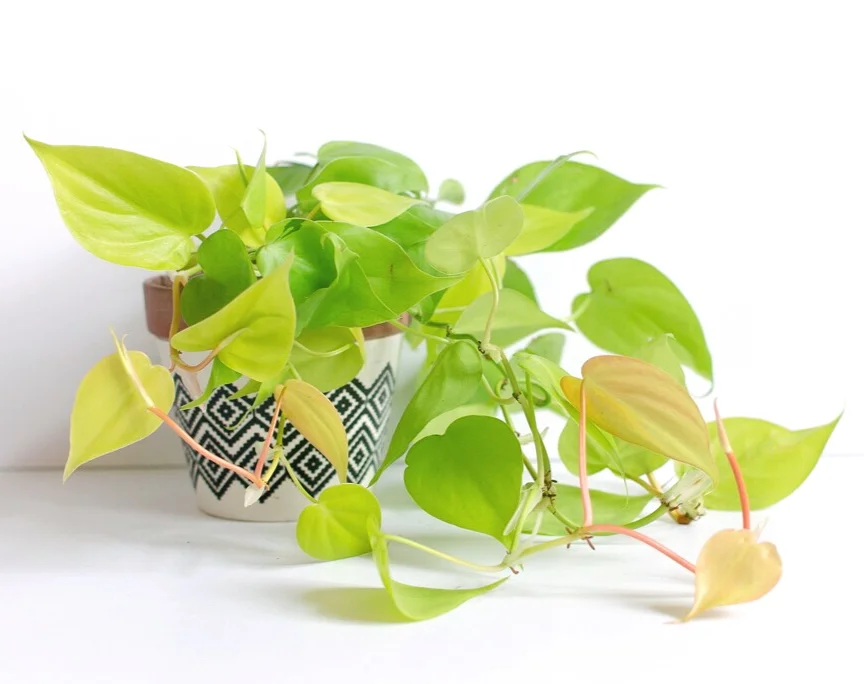Ten easy houseplants for beginners
There are a lot of lists on the internet - especially Pinterest - touting easy-care plants, plants for rooms with virtually no light, plants that hate water, etc. Pinterest is great for recipes or design inspiration or makeup tips, but when it comes to plant care... take it with a grain of salt and do your research! I've seen some really terrible advice on those catchy infographics that makes me cringe. So I wanted to make a solid list of easy-care plants that are great for beginners and will bolster your confidence as a plant owner, based on my experience and talking to lots of other plant folks! I truly believe that once you feel the thrill of being able to keep plants alive and thriving, you'll want to move on those higher-needs plants. This is by no means a comprehensive list and I really had a hard time narrowing it down to just 10 plants. You may have had a really easy time with other plants, or maybe you managed to kill plants that are on this list. That's a-okay! Drop me a line and tell me about your experiences and what you've had luck with! I’ve chosen the following plants on their ability to adapt to all kinds of lighting situations and tolerance of uneven watering and dry household air.
Sansevieria 'Fernwood' is one of the many easy varieties of snake plant.
1.) Snake plant/mother-in-law's tongue (Sansevieria trifasciata) - The tried-and-true snake plant gets my vote for "Most Indestructible Houseplant." The only way to kill these uber-hardy plants are to drown them with water or put them in the freezing cold. What makes them choice beginner plants are that they adapt to a wide variety of lighting situations and practically thrive on neglect. You'll often see them labeled as one of the best-low light plants, which is true. They can tolerate the shadiest corners of your house, but they'll merely survive - not thrive and grow. Some people don't mind that, so it's up to you as a plant owner! Ultimately, snake plants are going to do best in bright, indirect light and can even be acclimated to full sun outside. They also only need watered about once or twice a month, and even less during the winter. Make sure the potting medium dries out entirely between waterings, like you would do with a cactus. Continued overwatering will cause root rot.
Zamioculas zamiifolia is known for it's stalwart disposition as a plant.
2.) ZZ plant/Zanzibar gem (Zamioculcas zamiifolia) - Another favorite super-plant is the ZZ plant, which is slightly newer on the market. If you read any houseplant care books before the mid-2000s, the ZZ plant isn't listed. Now I find them readily available at big box stores and local nurseries alike! They have huge, rhizomatous root systems that store water, so the ZZ plant is especially drought-resistant. A monthly watering should more than suffice, but if you forget and go even longer, the ZZ plant will forgive you. During the winter, water even less! ZZ's also enjoy humidity, as most tropicals do, so this is an outstanding plant for a low-light bathroom. I find that inside, my ZZ is a bit of a slow grower, but will grow exponentially when put outside under a tree during the summer.
Aspidistra 'Starry Night' is a unique variegated option! Photo courtesy of @basilandbloom_ on Instagram.
3.) Cast iron plant (Aspidistra eliator) - Unlike the ZZ plant listed above, I don't see aspidistras often. They were hugely popular in the Victorian era and the '70s and '80s, but they're hard to find nowadays, even online. If you ever find one or seek one out, consider yourself lucky and snatch it up! Cast iron plants are so-called because, well, they are TOUGH and can handle just about anything you throw at them, including all sorts of air pollutants. These are ideal plants for very low-light areas and they happily survive neglect. As with most of the plants on this list, the surest way to kill ‘em is continual overwatering, so allow the soil to become nearly dry between waterings. Just stick your finger right down in to the soil if you’re not sure!
Epipremnum aureum 'Pearls and Jade' is a popular choice and fast grower.
4.) Pothos/devil's ivy (Epipremnum aureum) - Everyone should have a versatile pothos at some point in their life because they grow like weeds, are easy to propagate, and look stunning hanging in a basket or trained to climb. Their vines can grow to 8' long, and given the chance to climb, the leaves will become quite large. Pothos can tolerate low and fluorescent light, making it a great office plant, but growth will increase with brighter light. Additionally, the more light a pothos receives, the more variegation will occur. Pothos are, of course, extremely forgiving, but it's best not to repeatedly overwater. Still, I've overwatered my pothos in my early days of houseplant keeping, and it always managed to bounce back! Some of my favorite cultivars are 'Neon', which is a bright, lemon-lime shade, and 'Pearls and Jade' (pictured above), which has a highly variegated pattern of white, cream, and shades of green and gray.
A classic Aglaonema, courtesy of @lindasleaves on Instagram
5.) Chinese evergreen (Aglaonema spp.) - I call my aglaonema "old reliable," because it's a steady grower and never gives me a bit of trouble. In my experience, they’re the only lower light tolerant plants that still produce new growth like crazy even in the shadiest parts of your house. Like many of these other plants, there are almost endless cultivars and hybrids of Aglaonema to choose from to suit your style. I'm a fan of the classic 'Silver Bay' and bright 'Siam Aurora.' Keep your aglaonema in a north or east-facing window, and water it when the soil is dry to the touch. I sometimes go two weeks between watering mine and it keeps plugging away! The surest way to upset your aglaonema is by putting in in full sun (now why would you do that with ANY plant other than a cactus?), or letting it sit in temperatures below 60 degrees F.
Philodendron hederaceum 'Neon' is a really unique option if you want to diverge from standard green foliage!
6.) Heartleaf philodendron (Philodendon hederaceum) - Philodendron hederaceum is a classic, recognizable houseplant that I remember my grandma tending to. Similar to the pothos in terms of looks and care, they're hard to tell apart at first. The surest way to tell the difference between the two is to look at new leaves - philodendron leaves will emerge from a papery sheath, while new pothos leaves do not. There are a multitude of ways to differentiate between the two, but for now let’s keep it simple! Philodendrons do best in bright, indirect light, but are surprisingly tolerant of a low north-facing window. Even in the gray days of winter, expect to see continual new growth. Let the soil dry slightly between waterings, but don't let it dry out completely so that the edges of the soil pull away from the sides of the pot.
Crassula ovata variegata courtesy of @the.houseplant.momma on Instagram
7.) Jade plant (Crassula ovata) - I don't typically suggest succulents as starter plants since they're too easy to overwater and require high light. I just don't think they're versatile enough to be considered a novice plant, and know too many folks who've killed succs. The jade plant is my exception to succulents. Even my brown-thumbed mother has managed to make her jade plant thrive, and that's saying a lot. (Love you, mama.) Jade plants certainly appreciate a few hours of direct light a day, but will be just as happy in more moderate light from an east-facing window or bright shade outside. As they mature, they become more treelike and grow thick, woody stems. Allow the soil to dry slightly between waterings, and dry completely during the winter when growth slows considerably. If leaves start to drop or acquire brown spots, it's likely over-watered.
A fun, curly spider plant courtesy of @vertplants on Instagram
8.) Spider plant/airplane plant (Chlorophyllum comosum) - The spider plant is one of the easiest and most popular houseplants around, and I can remember seeing them in just about every doctor and dentist office as a kid. Besides being a superb novice plant, it's scientifically proven to rid the air of pollution AND is non-toxic for pets! Seems like a winner all around! Additionally, spider plants shoot out "runners" that will produce little baby spider plants called "plantlets" at the end. These plantlets are easily rooted to make even more spider plants, making it a great plant to experiment with propagation for the first time. Spider plants do best in moderate to bright light, but I've known them to acclimate to a few hours of full sun outside. They're also surprisingly drought-tolerant, but repeated drying out can stress the plant. Try to water your spider plant when the soil is dry 1-2 inches down. One caveat about this plant that it's sensitive to tap water; fluoride can cause the tips to turn brown, so distilled water or rainwater are excellent choices. Otherwise, these are pretty lenient plants that will last for years if taken care of well.
Syngonium podophyllum 'Pink Allusions’ really packs a pop of color!
9.) Arrowhead vine (Syngogium podophyllum) - Arrowhead vines are one of the fastest growing plants, constantly unfurling new leaves. They're another shade-loving plant and will happily grow in a north-facing window, but wouldn’t mind some direct sun from a west-facing window either! As tropical plants, arrowheads enjoy a bit of extra humidity, but they are surprisingly toleratant of standard household humidity. Water your arrowhead plant when the soil is dry a good 2-3" down; the new growth will start to yellow if the soil stays too wet. These plants look lovely in a hanging basket when allowed to vine, but can also be trained to climb a trellis. Check out varieties like 'Pink Allusions' (pictured above) or 'Maria' for stunning shades of pink and copper.
Peperomia caperata 'Red Ripple' adds lots of texture and color!
10.) Radiator plant (Peperomia spp.) - Most species of peperomia (or "peps" as I affectionately call them) are undemanding and do well in moderate light. They also tend to stay quite small and compact, so they're good choices for terrariums! Peps are slow growers, so if you place them in lower light, don't fret if it doesn't produce a lot of new growth. Peperomias - like most houseplants - will grow faster in brighter light, so consider a west window or filtered south window if you want to see it take off. Many pep species have a semi-succulent nature, so allow them to dry out completely between waterings. I pot all of my peperomias in terra cotta pots with succulent soil to ensure excellent drainage. Two species in particular are hardier to overwatering: P. obtusifolia and P. 'Hope' - they have woody stems that aren't as effected by soggy roots. P. caperata and P. argyreia have softer stems that will droop and get mushy if overwatered.










